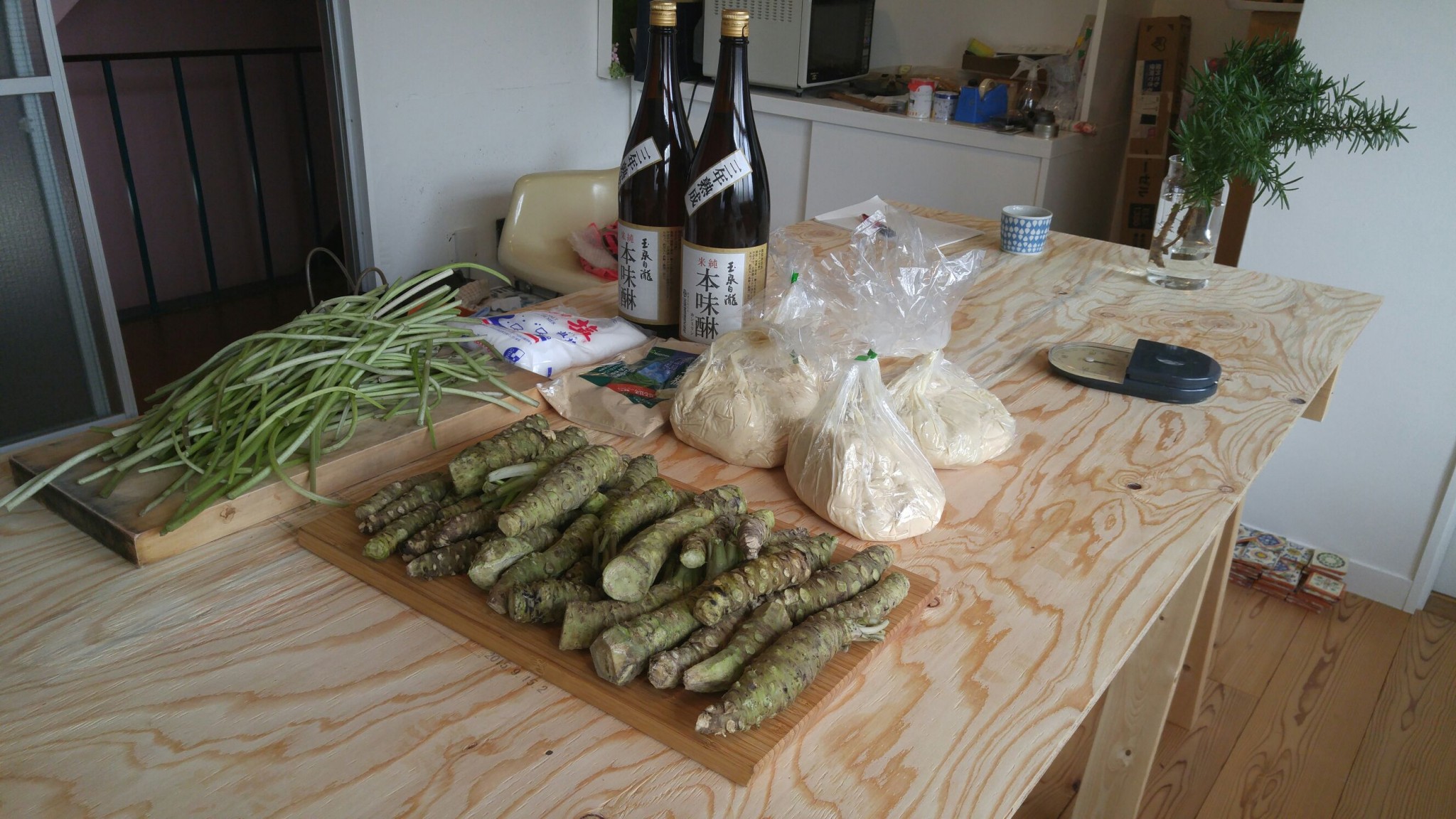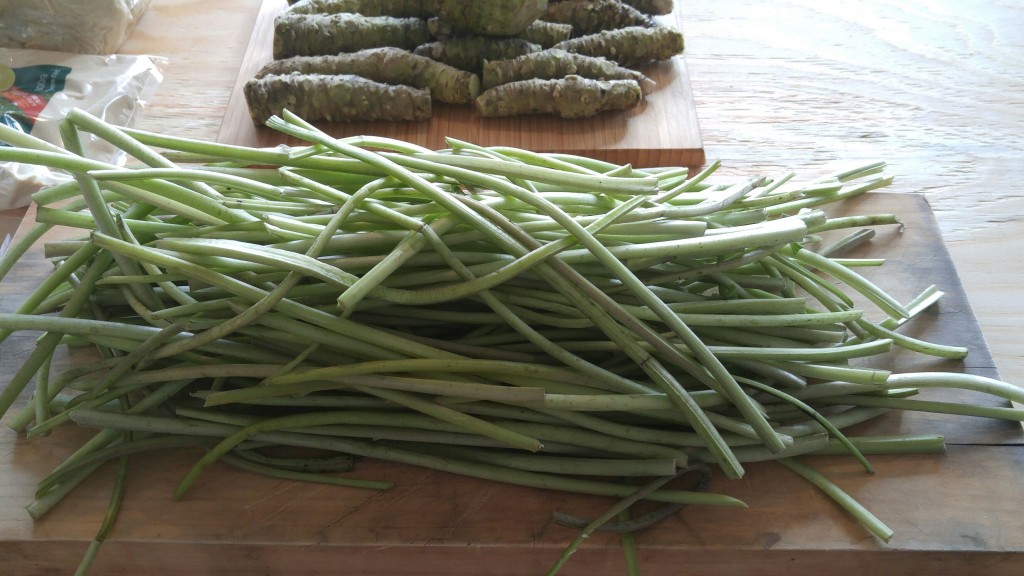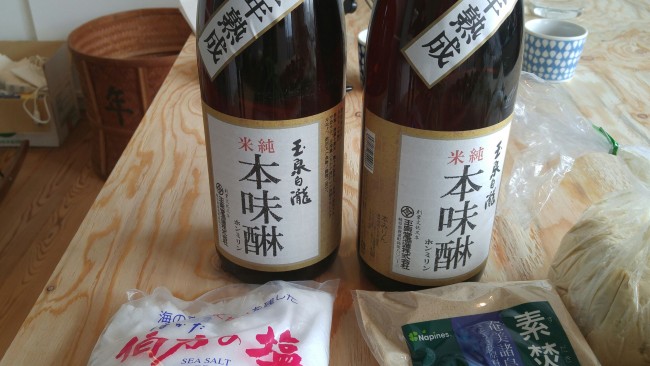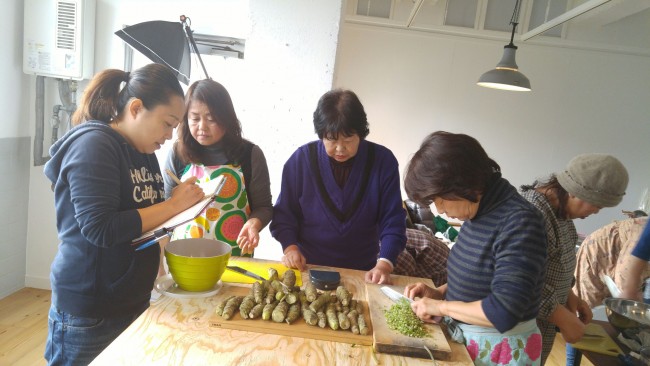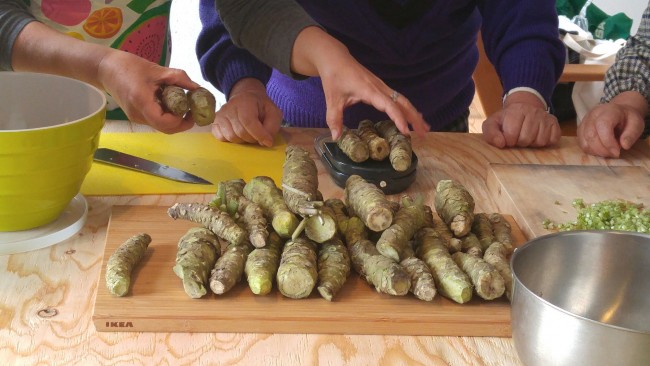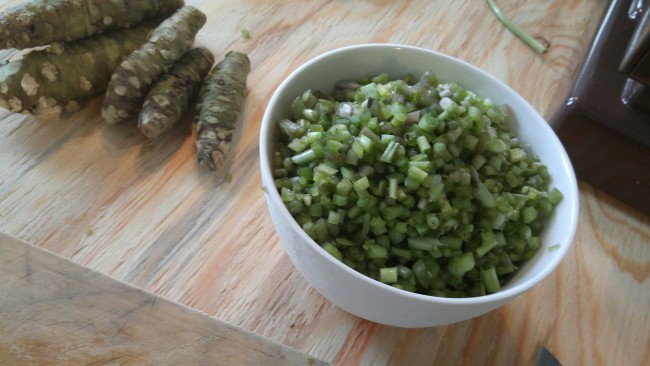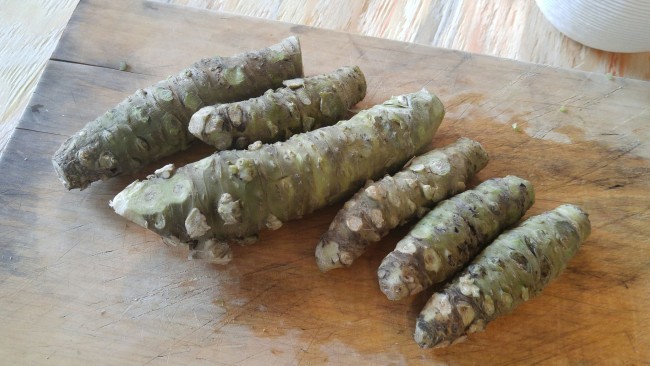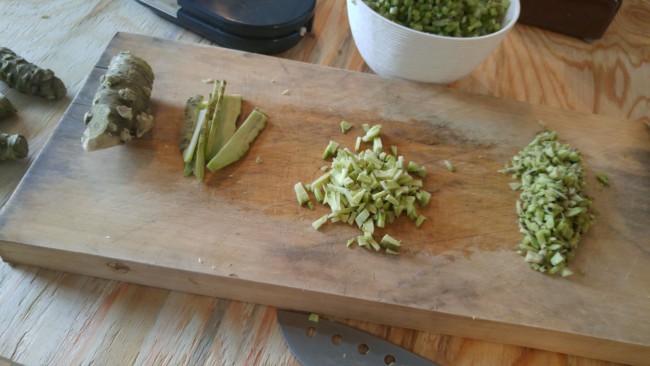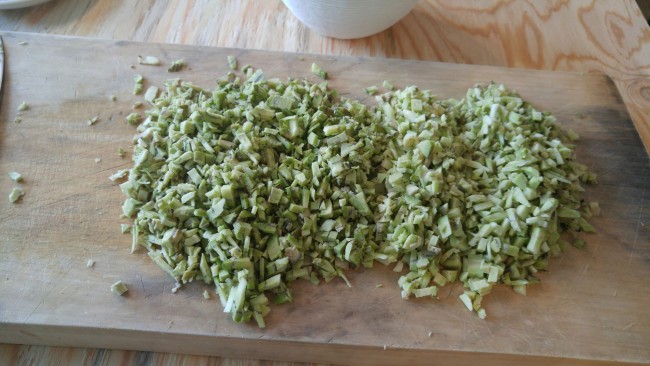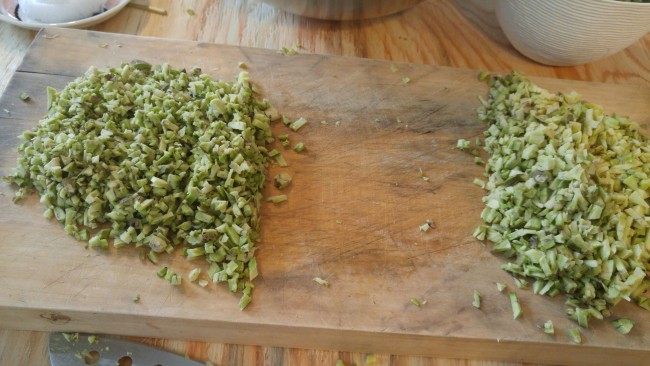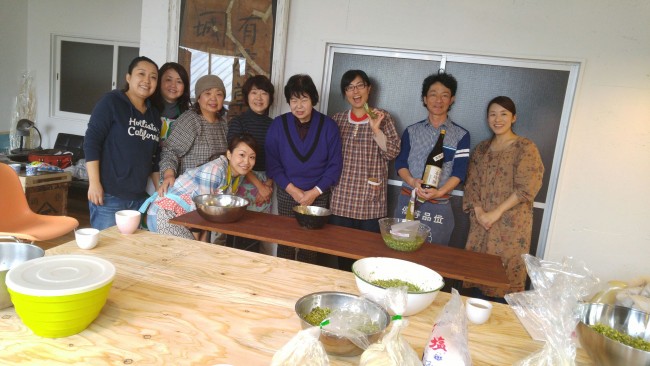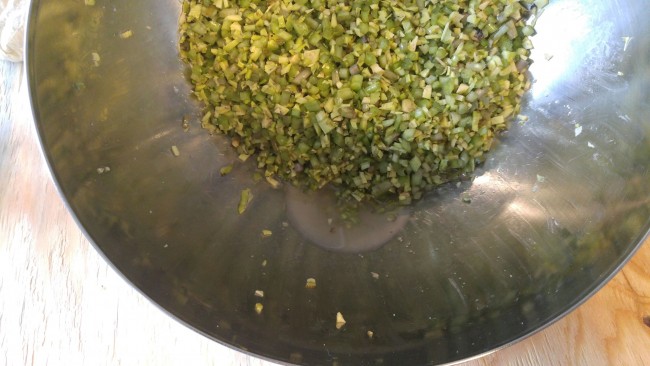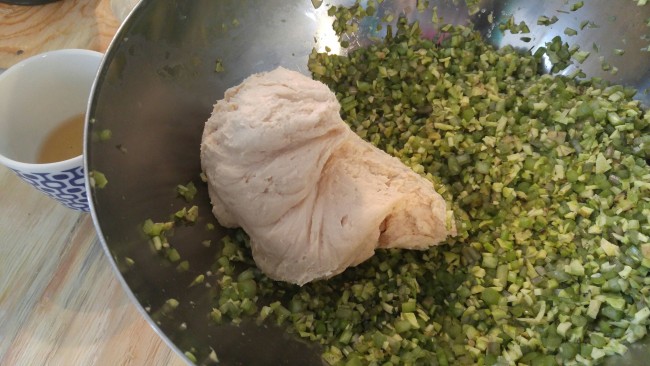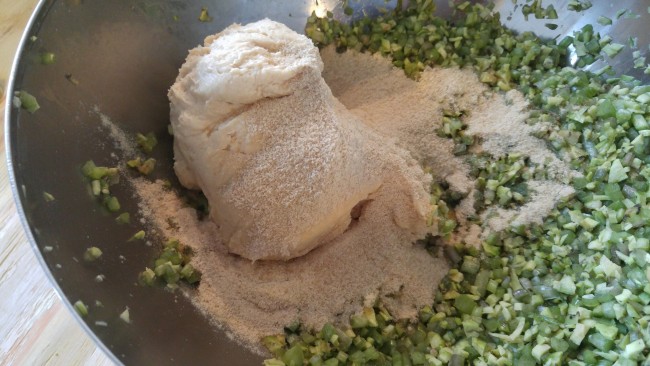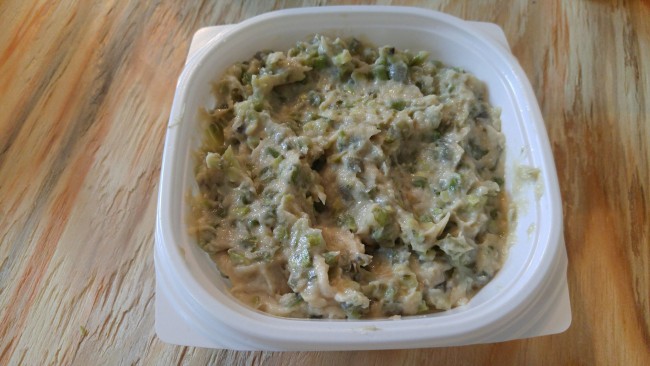The other day, my good friend Miss Asami Itoh, invited me and 7 more guests to make wasabi zuke according to a traditional recipe at her company, Marufuku Tea Factory Co. Ltd in Shizuoka.
Wasabi zuke literally means “pickled wasabi” and it is a typical agricultural product of Shizuoka Prefecture, and particularly Shizuoka, the birthplace of wasabi in Japan. Wasabi Zuke might be common in Shizuoka but I can assure you it is a rare and expensive delicacy away from our region.
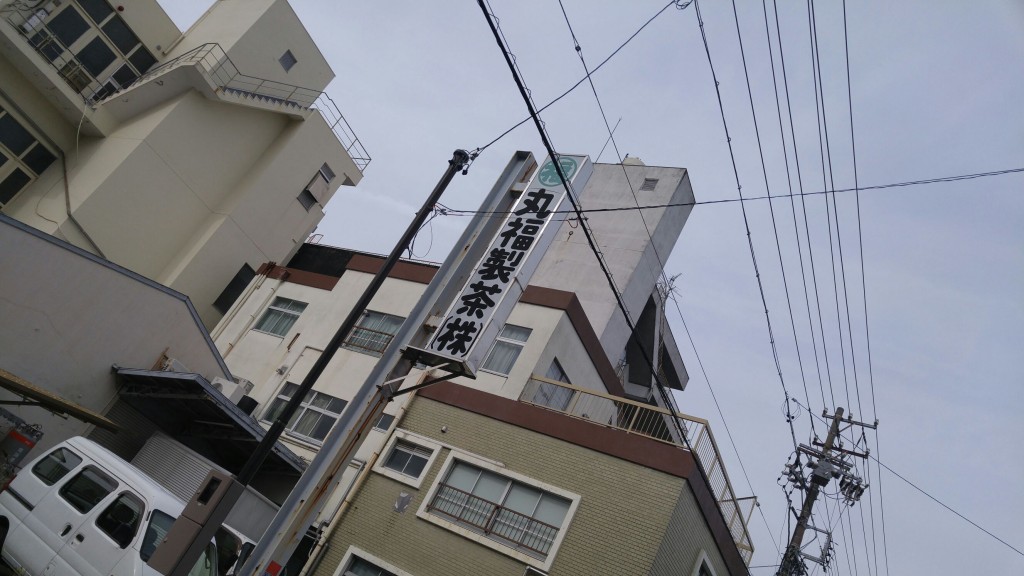
For that particular session, all products were either from Shizuoka or made in Japan. The fresh wasabi roots and stems were cultivated in the mountains along the Abe River in Shizuoka, the sake kasu/sake white lees came directly from a sake brewery in Shizuoka Prefecture. The salt, brown cane sugar and the mirin/sweet sake were all made in Japan.
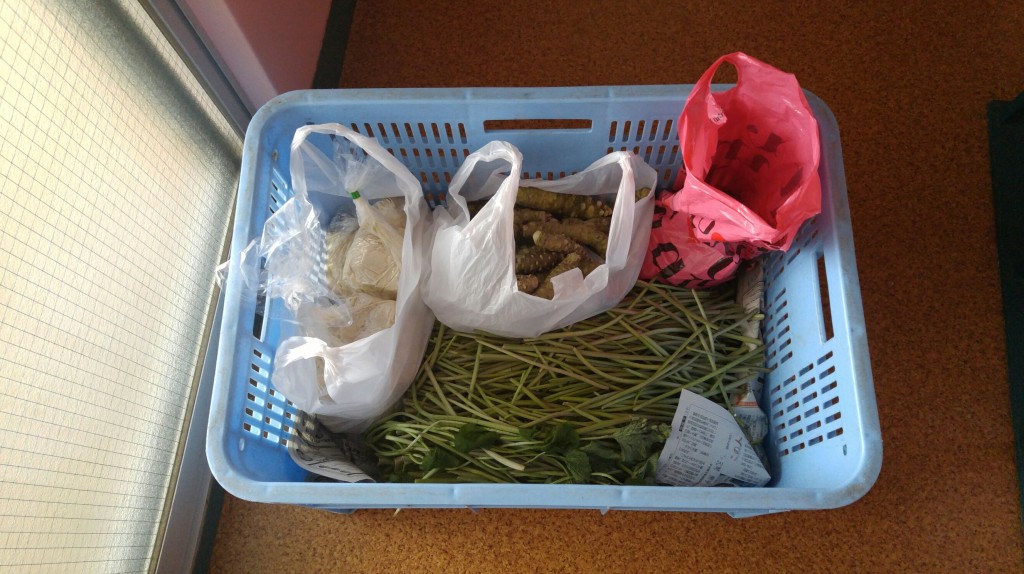
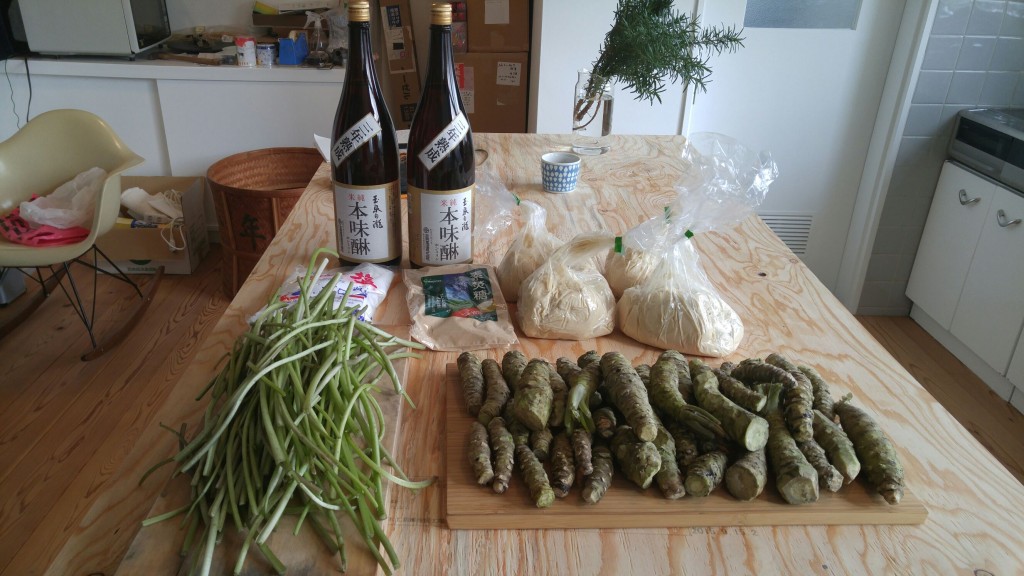
The fresh and clean wasabi roots were of very good quality but cheaper (by Shizuoka standards) due to their “inferior” shape.
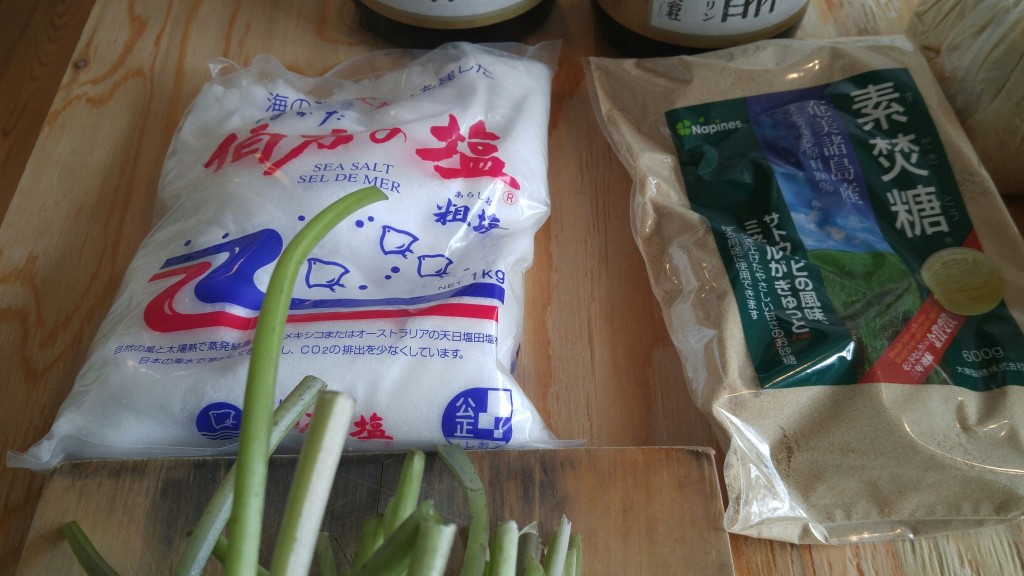
Each member was allotted the following for the recipe:
Fresh wasabi root: 375 g
Wasai stems and small leaves: 375 g
Sake kasu/Sake white lees: 500 g
Salt: 37 g
Sugar: 100-120 g
Mirin/sweet sake: optional
Making sure that everybody understood the proportions
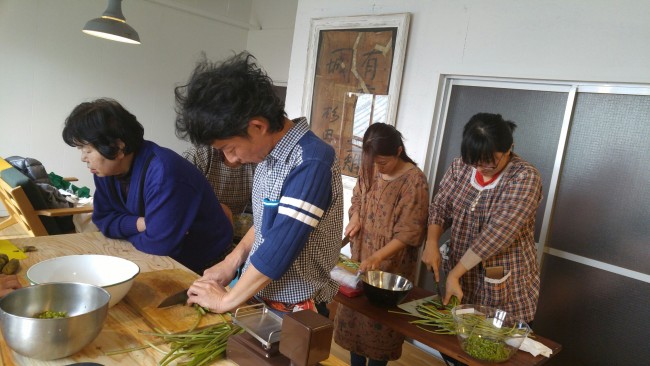
Third chopping, the roots have to be hand-chopped finely to obtain maximum piquancy. A machine would not do a good job, it is all slow food.
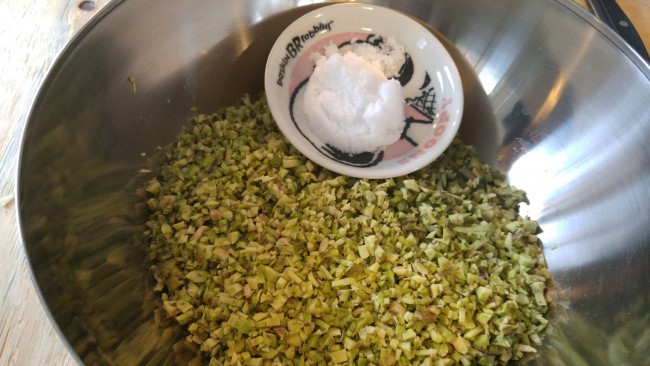
Press out by hand as much of the excess water as possible.
Softened sake kasu/sake white lees. If you use unprocessed sake kasu, you will have to soften it by kneading it or using a beater.
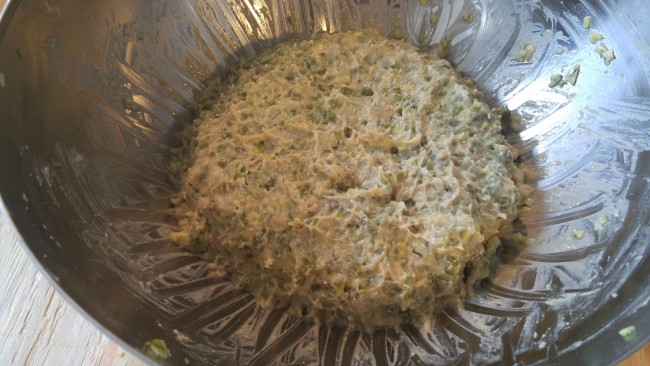
Filling small boxes to take back home, we had 1.2 kg of it each! Note that it is greener than the comparatively cheap variety you will find in shops downtown and I dare not have imagined the price even in Shizuoka. It is to be eaten over freshly steamed white rice, with baked poultry, sausages and even hot on toasts.


